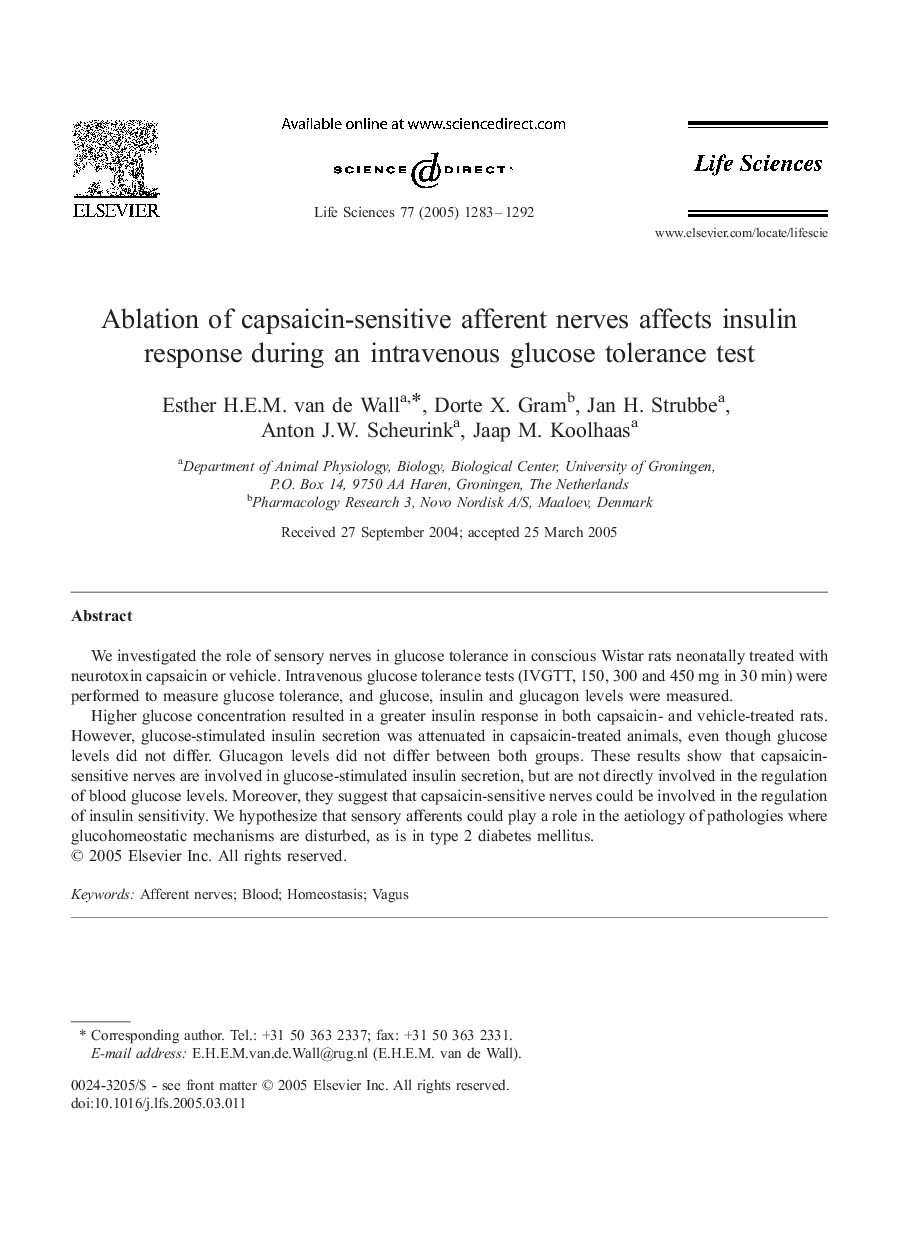| Article ID | Journal | Published Year | Pages | File Type |
|---|---|---|---|---|
| 9012756 | Life Sciences | 2005 | 10 Pages |
Abstract
Higher glucose concentration resulted in a greater insulin response in both capsaicin- and vehicle-treated rats. However, glucose-stimulated insulin secretion was attenuated in capsaicin-treated animals, even though glucose levels did not differ. Glucagon levels did not differ between both groups. These results show that capsaicin-sensitive nerves are involved in glucose-stimulated insulin secretion, but are not directly involved in the regulation of blood glucose levels. Moreover, they suggest that capsaicin-sensitive nerves could be involved in the regulation of insulin sensitivity. We hypothesize that sensory afferents could play a role in the aetiology of pathologies where glucohomeostatic mechanisms are disturbed, as is in type 2 diabetes mellitus.
Keywords
Related Topics
Health Sciences
Medicine and Dentistry
Cardiology and Cardiovascular Medicine
Authors
Esther H.E.M. van de Wall, Dorte X. Gram, Jan H. Strubbe, Anton J.W. Scheurink, Jaap M. Koolhaas,
